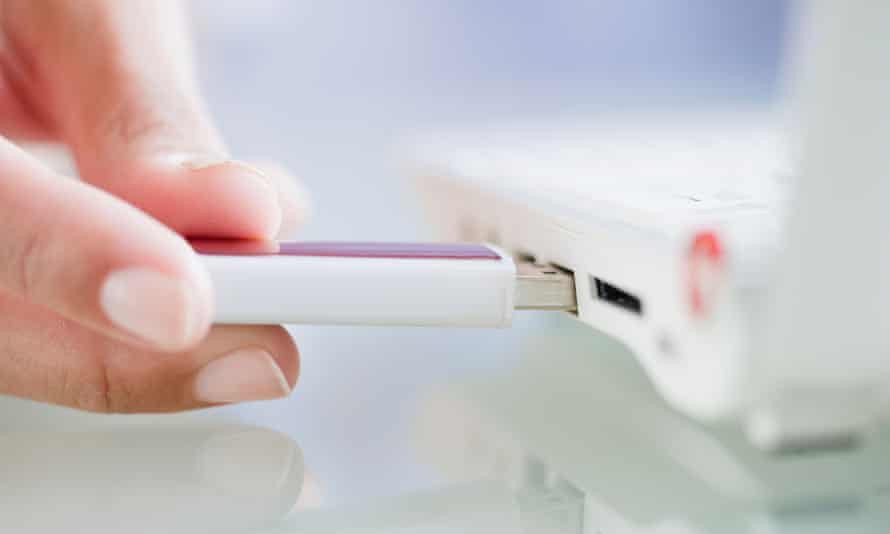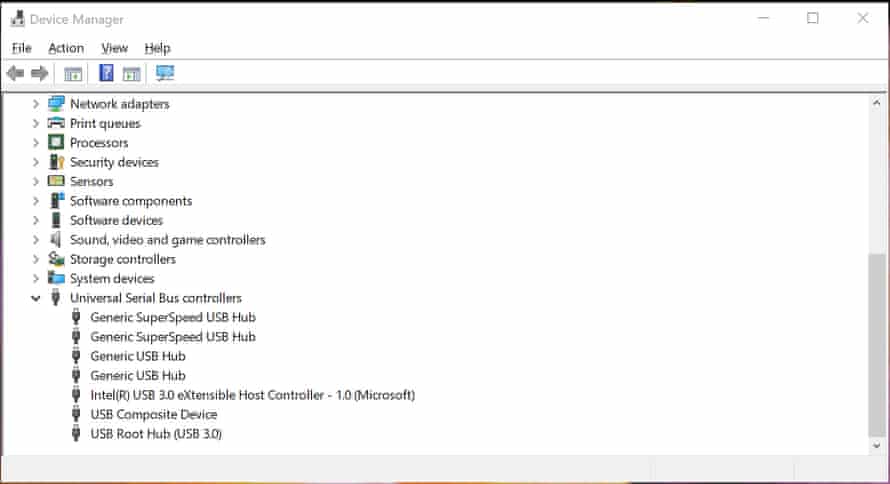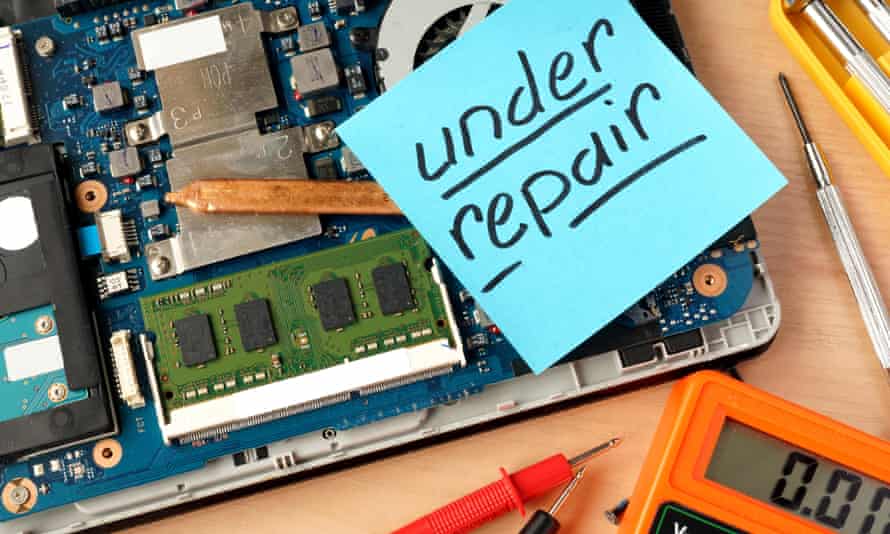How To Open A Hard Drive On Windows
My external USB hard bulldoze, with 11,000 photos from Windows vii, isn't recognised by Windows 10. How do I transfer them to Windows x for future safekeeping? Jaki
The Universal Series Motorbus (USB) connects billions of keyboards, mice, joysticks, printers, external hard drives and other peripherals to roughly 1.5bn personal computers, and more than 3bn mobile phones utilise the smaller Micro USB and newer USB-C versions. It generally works pretty well just most people have probably suffered from a USB device failing or not being recognised.
Lots of things can go wrong. The port, the connecting cable, the power supply and the external hard drive (EHD) can all suffer from physical and/or electrical faults.
Some external difficult drives depict their ability from the USB port and they may not get enough. This tin can be a problem if the PC's motherboard does not supply plenty power to the USB port you lot are using or if the drive is plugged into a non-powered hub. EHDs that accept their own power supplies tend to work more than reliably.
USB cables can fail later prolonged utilise, though this is more probable to happen to the Micro USB cables used with mobile phones. External hard drive cables rarely fail unless they go the aforementioned sort of abuse. Still, if you have two devices that use the same type of cablevision, you can bandy them over to encounter if that solves the problem.
Alternatively, it could be a software problem. For example, it could be the lack of a suitable driver, a corrupted commuter or a conflict with another USB device.
If y'all do not have a backup and cannot get the bulldoze to work, it may be worth rolling back to Windows seven and making a backup before reinstalling Windows 10 – or enlisting the help of a friend who is notwithstanding running Windows vii.
Back up, support, back up

You should never lose data because an external USB hard bulldoze fails. Ideally, y'all should accept at least three copies of your photos stored on dissimilar media and at least one should be kept in a different place. Schofield'south Second Law of Computing states that data doesn't really exist unless you accept at least two copies of it.
Yous can back upwards your photos to thumb drives, SD cards, optical discs (CD, DVD, Blu-ray), external hard drives, a local network server or an online service. These include Amazon Photos, Apple's iCloud, Microsoft OneDrive, Google Ane and third-party services such as pCloud and Mega.NZ. Come across my contempo answer to "Where's the cheapest place to store 500GB of data online?"
Diagnostic software
The major hard drive manufacturers have the nigh experience in debugging hard drive issues and some have free software to help. The leading examples include WD's Data Lifeguard Diagnostics and Seagate'southward SeaTools for Windows. Yous may already take ane installed. If non, bank check your EHD manufacturer's website for a tool that could find and ready your missing drive.
Unproblematic debugging
Almost USB failures are glitches. Often, if a device is not recognised by one port, it will work when plugged into a unlike port or a different PC. If non, the traditional approach – basically, turning your PC off and on once again – often works.
First, unplug the EHD, unplug it from the mains and unplug and straighten the data cable. Second, restart your PC and wait for ii minutes (because Windows 10 keeps loading things in the background even afterward it claims to be ready for use). Third, plug the connecting cable into the EHD, making sure it is firmly seated. Finally, plug the EHD back into the mains, plough it on (if it has a manual switch) and plug the USB cable back into the PC. With luck, either the PC will recognise the external drive or discover information technology as a new device and install it with a suitable driver.
Turning a PC off and on does not work also as information technology used to considering of Windows 10's Fast Startup system. Ideally, we want the PC to forget everything and brand a fresh start. With Fast Startup, Windows 10 stores core parts of memory, including the drivers, in a hidden file called hiberfil.sys and but reloads this file when y'all plough it back on. You could temporarily disable Fast Startup only I'd merely movement on to the adjacent step.
Uninstall, reconnect

If a reboot doesn't make Windows renew its USB drivers, yous can practise it manually. With the EHD plugged in, get to the Start menu and type or paste the words "Device Manager" into the search box, and then run the app that comes up. Next, click the arrow (>) next to "Disk drives" in the Device Director programme to see a list of the drives that your PC knows about. Look for the drive that is not being recognised. It should be obvious from its name, which might be something like "WD Ext HDD 1021 USB Device" or "WD MyBook" or "Seagate Expansion Desk", or whatever.
Correct-click on your EHD and select "Uninstall device" from the pop-up menu. When that has finished, unplug the USB cable.
Look a infinitesimal, then plug the USB cable back in. Windows should see the drive and install a driver. Your EHD should then appear in the "This PC" section of Windows 10's File Explorer.
If this doesn't work, use the Settings app to run Windows Update, restart your PC and effort once more. Windows Update delivers new drivers and software patches when they become available.
Some – usually obscure – USB peripherals use special drivers that you can only download from the manufacturer's website. If Windows hasn't found the all-time driver, it might exist worth looking for one. If yous detect one, follow the same procedure but select "Update driver" from the menu.
In passing, users who accept no problems with external drives tin nevertheless use Device Manager. The default setting for USB drives allows their quick removal. This reduces the gamble of data corruption when users unplug drives without thinking. Select "Properties" from the pop-up carte, go to the "Policies" tab and change the default to enable write caching in Windows. This improves performance only you must use the "Safely Remove Hardware" option before unplugging devices.
Trash your USB controllers
USB ports are handled by USB host controllers. To encounter them, click the pointer next to "Universal Serial Motorcoach controllers", which will be at or most the bottom of the alphabetical list in Device Manager. As before, right-click each host controller and select Uninstall. One time y'all have finished, restart your PC. Windows volition automatically reinstall the USB host controllers with clean, fresh versions.
Beyond this, at that place is non much you tin can exercise. If a PC has serious problems, y'all could always reinstall the BIOS firmware and update the motherboard's chipset drivers. The latest versions should be available from the PC or motherboard manufacturer's website. However, non-technical users should never take to do this blazon of affair unless prompted.
For example, you may accept done a firmware update terminal year considering near big PC suppliers rolled out fixes for the Spectre and Meltdown vulnerabilities covered in an earlier answer. But it shouldn't be necessary for a simple trouble like a USB bulldoze non existence recognised.
Rescue your data

All hard drives neglect, typically after five or more years but sometimes after a few months. This is why nosotros need backups. Sometimes EHDs fail but the drive still works. If y'all don't have a backup and cannot afford a professional person information recovery service, this is a final resort.
USB drives are just cheap hard drives in (usually) plastic enclosures. You can easily make your ain by buying a big difficult drive and a separate enclosure. If your EHD doesn't work just you lot can hear the drive spin up when it is plugged in, you can endeavour removing the difficult drive and installing it in a new enclosure.
Enquiry your EHD online to discover out how big the drive is (2.v inch or 3.5 inch) and the type of drive (normally SATA), so you can buy the correct enclosure. Plastic enclosures are inexpensive and generally practiced enough. Metal enclosures with built-in fans are ameliorate for cooling a difficult bulldoze that is in constant apply and making information technology last longer.
Have y'all got a question? E-mail it to Ask.Jack@theguardian.com
Source: https://www.theguardian.com/technology/askjack/2019/aug/08/how-to-make-windows-10-recognise-an-external-hard-drive
Posted by: connorsseent1983.blogspot.com

0 Response to "How To Open A Hard Drive On Windows"
Post a Comment